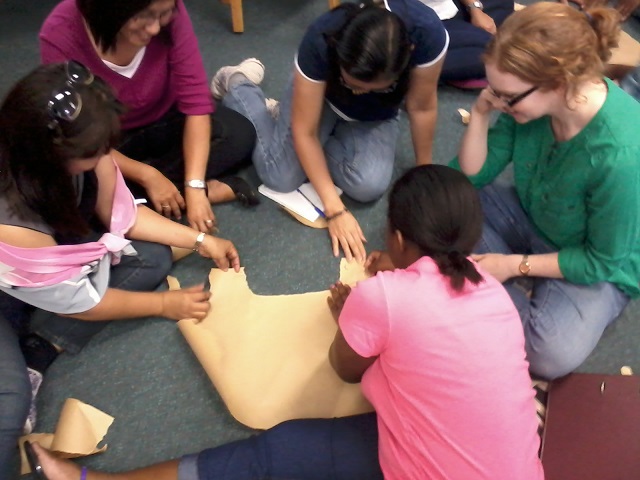
In the ever-evolving world of software development, the Scrum Master plays a pivotal role in guiding teams through the complexities of Agile methodologies. As organizations continue to embrace Agile practices, understanding the responsibilities and challenges faced by a Scrum Master is crucial. This article delves into the core duties of a Scrum Master, the hurdles they encounter, and the impact they have on a team’s success.
What is a Scrum Master?
Before diving into the responsibilities and challenges, it’s important to define what a Scrum Master is. A Scrum Master is a facilitator for an Agile development team, helping them to follow Scrum practices, a subset of Agile. They ensure that the team adheres to Scrum theory, practices, and rules. Unlike a traditional project manager, the Scrum Master does not have authority over the team; instead, they act as a servant-leader, enabling the team to achieve their highest potential.
Key Responsibilities of a Scrum Master
The role of a Scrum Master encompasses several critical responsibilities that ensure the successful implementation of Scrum within a team. Here’s a closer look at these responsibilities:
1. Facilitating Scrum Events
A Scrum Master is responsible for organizing and facilitating key Scrum events, including daily stand-ups (Daily Scrum), sprint planning meetings, sprint reviews, and sprint retrospectives. These events are essential for maintaining team alignment, planning work, and continuously improving processes.
- Daily Stand-ups: Short meetings where team members discuss what they worked on yesterday, what they plan to work on today, and any impediments they are facing.
- Sprint Planning: A session where the team discusses and plans the work for the upcoming sprint.
- Sprint Review: A meeting to demonstrate the work completed during the sprint to stakeholders and gather feedback.
- Sprint Retrospective: A time for the team to reflect on the sprint and identify areas for improvement.
2. Removing Obstacles
One of the primary duties of a Scrum Master is to remove any impediments that might hinder the team’s progress. This could involve anything from resolving conflicts within the team to addressing external challenges such as dependencies on other teams or resources.
3. Coaching the Team
The Scrum Master acts as a coach for the development team, helping them to understand and embrace Agile practices. They work closely with the team to ensure that everyone is clear on the goals of the project and that Scrum principles are being followed.
4. Promoting Continuous Improvement
Continuous improvement is at the heart of Agile practices, and the Scrum Master plays a key role in fostering this within the team. By facilitating retrospectives and encouraging open communication, the Scrum Master helps the team to identify areas where they can improve and implement changes that enhance their effectiveness.
5. Shielding the Team from Distractions
A Scrum Master protects the team from unnecessary interruptions and distractions, allowing them to focus on delivering high-quality work. This might involve managing interactions with stakeholders or other teams to ensure that the development team can concentrate on their tasks.
Challenges Faced by Scrum Masters
While the role of a Scrum Master is essential for the success of an Agile team, it comes with its own set of challenges. Here are some of the common challenges Scrum Masters face:
1. Resistance to Change
One of the biggest challenges for a Scrum Master is dealing with resistance to change. Agile practices require a shift in mindset, and some team members or stakeholders may be reluctant to adopt new ways of working. The Scrum Master must work to overcome this resistance by clearly communicating the benefits of Agile and providing support throughout the transition.
2. Balancing Multiple Teams
In some organizations, a Scrum Master may be responsible for more than one team. Balancing the needs of multiple teams can be challenging, especially when each team is at a different stage of Agile maturity. The Scrum Master must manage their time effectively and prioritize their efforts to ensure that all teams receive the support they need.
3. Navigating Organizational Hierarchies
Scrum Masters often face challenges when dealing with organizational hierarchies and traditional management structures that may not align with Agile principles. They must navigate these structures carefully, advocating for Agile practices while also respecting the established hierarchy.
4. Managing Stakeholder Expectations
Stakeholders often have high expectations for the delivery of projects, which can put pressure on the team. The Scrum Master must manage these expectations, ensuring that stakeholders understand the Agile process and the importance of delivering value incrementally rather than focusing solely on deadlines.
5. Handling Team Dynamics
Every team is different, and managing team dynamics can be one of the most challenging aspects of being a Scrum Master. Conflicts may arise, and the Scrum Master must be skilled in conflict resolution, facilitating communication, and fostering a collaborative environment.

The Impact of a Scrum Master
The effectiveness of a Scrum Master can significantly impact the success of an Agile team. When a Scrum Master effectively fulfills their responsibilities and overcomes challenges, the team is more likely to deliver high-quality products, meet deadlines, and continuously improve their processes.
1. Enhanced Team Collaboration
A successful Scrum Master fosters a culture of collaboration within the team. By encouraging open communication and creating a safe environment for sharing ideas, the Scrum Master helps the team to work together more effectively and build trust.
2. Increased Productivity
By removing obstacles and shielding the team from distractions, a Scrum Master enables the team to focus on their work, leading to increased productivity. The continuous improvement efforts led by the Scrum Master also contribute to more efficient processes and better use of resources.
3. Better Product Quality
With the Scrum Master facilitating regular reviews and retrospectives, the team is better equipped to identify and address issues early in the development process. This leads to higher product quality and fewer defects.
4. Higher Stakeholder Satisfaction
When a Scrum Master effectively manages stakeholder expectations and ensures that the team delivers value incrementally, stakeholder satisfaction is likely to be higher. Stakeholders are kept informed throughout the project, and their feedback is incorporated into the development process, resulting in a product that better meets their needs.
Conclusion
The role of a Scrum Master is both challenging and rewarding. They are the linchpin that helps Agile teams to function effectively, ensuring that Scrum practices are followed and that the team is continuously improving. While they face numerous challenges, from managing resistance to change to handling team dynamics, the impact they have on a team’s success cannot be overstated. A skilled Scrum Master not only helps the team to deliver high-quality products but also fosters a culture of collaboration, continuous improvement, and innovation. Are you looking for more information regarding the role of a scrum master? Then check out the scrum master course singapore to learn more.
